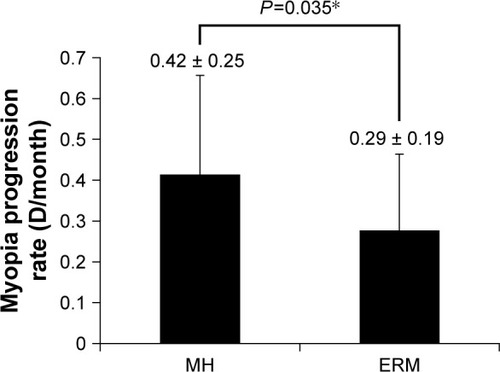Figures & data
Figure 1 Myopia progression rate (D/month) in both groups.
Abbreviations: MH, macular hole; ERM, epiretinal membrane.

Table 1 Preoperative, intraoperative, and postoperative factors in both groups
Table 2 Receiving cataract surgery after vitrectomy in both groups and tamponade material in MH group
Figure 2 Correlation between myopia progression rate and four factors (surgical time, gender, TA use, and BBG use) in the MH group.
Abbreviations: TA, triamcinolone acetonide; BBG, brilliant blue G; MH, macular hole.

Table 3 Correlation coefficients of factors related to myopia progression rate in the MH group
Table 4 The mean age of patients in the MH group
